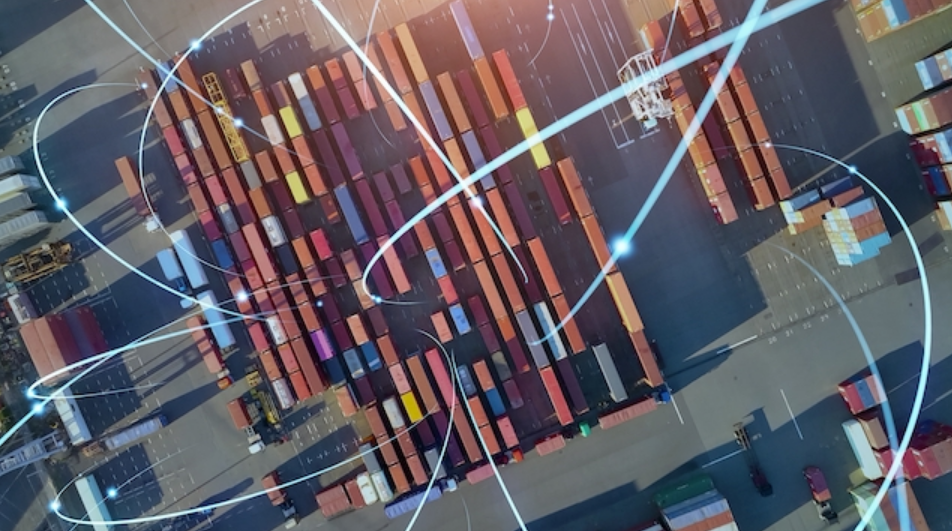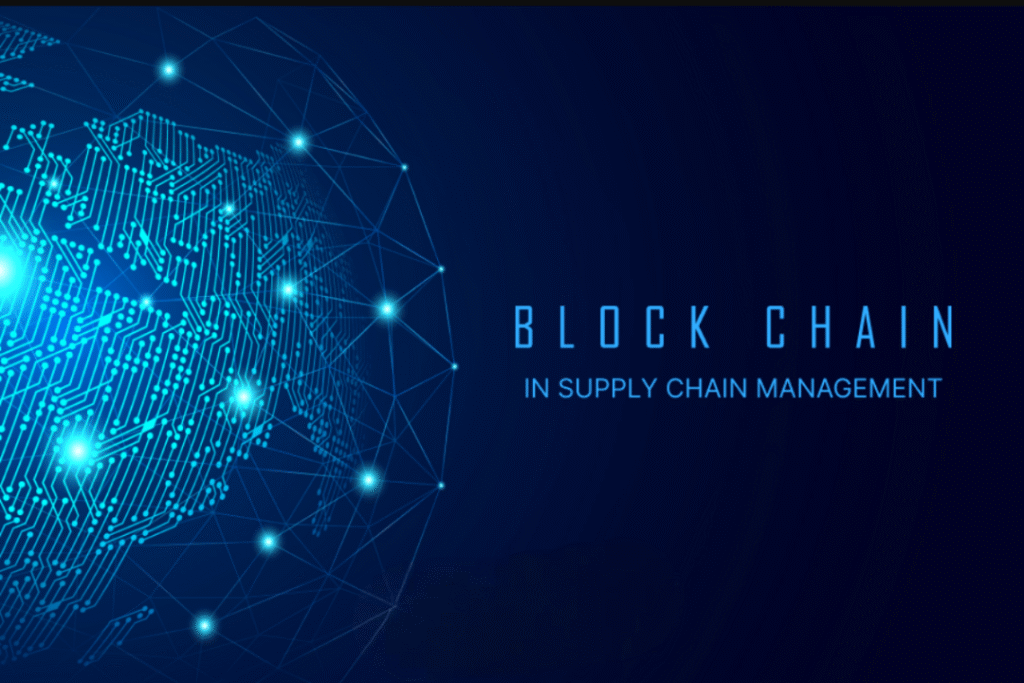In today’s fast-paced global economy, supply chains are being asked to deliver products faster, more openly, and more responsibly. Enter blockchain technology—a decentralized, trustworthy ledger that’s changing the game for companies tracing products from origin to consumer. Blockchain applications in supply chain tracking offer a historically unprecedented solution to age-old problems like fraud, inefficiency, and opacity. Through the establishment of permanent records, blockchain enables every party, be it producers or consumers, to trust the journey their products make.
Logistics, retail, and manufacturing sectors already enjoy the efficiency and transparency offered by blockchain. In this article, we describe how blockchain revolutionizes supply chain tracing. We will discuss its biggest benefits, real use cases, implementation plans, challenges, and future directions. As a business leader or tech enthusiast, you will know why blockchain is the basis of supply chain innovation today. Let’s break down how this technology is changing the future of logistics.
Overview of Blockchain in Supply Chain Context
What is Blockchain Technology?
Blockchain is a computer network ledger that logs transactions. Unlike a standard database, it is not owned by one. A transaction is a “block,” and they are coupled together in a chronological “chain” with cryptographically sealed links. Other characteristics are immutability (information cannot be changed), transparency (everyone has the same information), and strong security (locked with sophisticated algorithms). These characteristics make blockchain perfect for tracing goods along intricate supply chains.
Why Supply Chain Tracing Requires Blockchain
Supply chains are opaque, corrupt, and slow in traditional settings. Paper records, closed systems, and manual transactions are the source of delays and errors. Weeks, in fact, might pass to verify a product’s origin, increasing costs and risks. Blockchain does away with all these through the provision of real-time, unalterable information. Every step—procurement, manufacture, transportation—is recorded transparently, enabling trustless systems in which parties verify facts without intermediaries. This revolution maximizes supply chain efficiency and cuts fraud in half, making blockchain a crucial technology for modern-day logistics.
Benefits of blockchain applications in supply chain tracking
Enhanced Traceability and Transparency
Blockchain creates end-to-end traceability from farm to store. Every item’s journey is documented on an immutable ledger, accessible to anyone with the proper authorizations. A retailer, for instance, can trace an order of coffee all the way back to the origin farm, ensuring authenticity. Transparency halts counterfeiting, such as imitation products, and earns consumers’ trust by authenticating claims like “organic” or “fair trade.”
Increased Efficiency and Lower Costs
Smart contracts—autonomous contracts coded on the blockchain—seamlessly automate supply chain operations. They initiate actions such as payment or inspection independently, cutting labor in half. Blockchain saves enormous costs by removing middlemen and documentation. For an IBM report published in 2023, firms using blockchain cut supply chain expenses by up to 70% and saved tens of millions of dollars each year.
Increased Security and Trust
Blockchain cryptography security protects the network against cyberattacks and data tampering. Once data is written, it can hardly be modified without consensus on the network. This ensures trust among stakeholders because suppliers, retailers, and consumers may trust validated information. For instance, a consumer of diamonds can authenticate their ethically sourced diamond from blockchain-protected records.
Sustainability and Responsible Sourcing
Blockchain facilitates sustainable action through the tracking of environmental footprints and ethical supply chain sourcing. Businesses can track fair labor standards or carbon levels along value chains. Blockchain, for example, can authenticate that cocoa is produced by farms that do not employ child labor, which complies with consumer values for ethical commodities.
Blockchain Use in Supply Chain Tracking in the Real World
Food and Beverage Industry
Walmart’s use of IBM Food Trust is a case of food safety using blockchain. Lettuce tracking on a blockchain reduced tracing from days to seconds for Walmart. This enables rapid response to contamination, protecting consumers and ensuring regulatory compliance. Real-time tracking is in the interest of perishables by preserving freshness and reducing wastage.
Pharmaceutical Industry
Counterfeit medicines are a worldwide public health threat, siphoning off billions in the business. MediLedger, a project, employs blockchain to follow the drug from the maker to the pharmacy. Along the way, it keeps counterfeit drugs out of circulation. Blockchain also enables regulation, such as the U.S. Drug Supply Chain Security Act, improving patient safety.
Retail and Consumer Goods
High-end fashion businesses such as LVMH utilize AURA to trace luxury items such as handbags and jewelry. Blockchain is responsible for authenticity and for fighting counterfeiting as a cause of consumer trust. Open-source sourcing is also attractive to consumers who are green-friendly, as it is capable of verifying green processes in products such as apparel or jewelry.
Logistics and Shipping
Maersk’s TradeLens platform, built on IBM Blockchain, revolutionizes global shipping. TradeLens automates paperwork, reducing delays due to manual processing of paperwork. TradeLens simplifies coordination and accelerates shipping by connecting shippers, ports, and customs bodies. A 2024 report cited a 40% reduction in the cost of processing documents for TradeLens customers.
Using Blockchain to Track Supply Chains
Steps to Adopt Blockchain Technology
Blockchain deployment starts with a supply chain needs analysis. Describe the pain points, like time-consuming tracing or vulnerability to fraud. Then choose the right platform—open networks with Ethereum or closed, permissioned networks with Hyperledger. Pilot deployment enables feasibility testing before widespread deployment.
Integration with Existing Systems
Blockchain also aids in technologies like RFID and IoT. Status and location of products are tracked using IoT sensors, providing feedback to the blockchain for updating in real-time. Legacy system compatibility is the most critical aspect; APIs can link old databases with fresh blockchain solutions, and businesses can be transitioned with uninterrupted continuity without any interference.
Cost and Scalability Issues
Blockchain calls for initial investment in infrastructure and training. However, long-term cost reduction through lesser fraud and automation always pays back in full. Scalability is of utmost importance in supply chains around the world. Such platforms as Hyperledger Fabric are designed for high transaction volumes and are best suited to large corporations.
Collaboration with Stakeholders
Effective blockchain adoption relies on buy-in by suppliers, manufacturers, and logistics companies. Creating a consortium—a collective blockchain network—means all gain from openness. TradeLens, for instance, boasts more than 300 organizations enrolled, allowing cooperation throughout the shipping supply chain.
Challenges and Limitations
Technical Challenges
Scalability remains an issue for blockchain networks. Public blockchains like Ethereum slow down when there are high transaction volumes and get backed up. Energy consumption is also an issue; proof-of-work algorithms like Bitcoin’s are energy-hungry. More energy-efficient energy-hungry algorithms like proof-of-stake are in development to address this issue.
Adoption Barriers
Resistance is common in traditional supply chains. Stakeholders are not keen to adopt blockchain because they do not understand it or fear change. Technical know-how also serves to discourage adoption. Education programs and collaboration with blockchain suppliers can serve to overcome these resistances.
Regulatory and Compliance Issues
Country regulation varies, and blockchain adoption is therefore not easy. Data protection law, like GDPR, is difficult for open ledgers because data cannot be deleted once recorded. Zero-knowledge proofs or private blockchains strike a balance between openness and secrecy, but regulatory clarity remains elusive.
Future Trends in Blockchain for Supply Chain Tracking

Emerging Technologies
Blockchain is now being merged with AI to facilitate predictive analytics, the prediction of supply chain disruption. Smart contracts will be further developed to enable compliance automation, for instance, verification of the requirements of sustainability. They may enable wiser, more responsive supply chains.
Scaling Up Industry-Specific Blockchains
Application-specific industries like fashion and agriculture are developing bespoke blockchain solutions. Exchanges like AgriDigital track grain supply chains for traceability and quality, for example. These are bespoke systems for bespoke industry needs.
International Standardization Activities
Blockchain protocol standardization will encourage interoperability between industries. Organizations like the Blockchain in Transport Alliance (BiTA) are moving toward global standards, and information can be transferred readily around the world.
Sustainability Focus
Blockchain will drive the achievement of net-zero supply chain targets. Blockchain monitors the carbon footprint and supports greener processes, allowing companies to reach environmental targets. This backs growing consumer demand for green products.
FAQs About Blockchain applications in supply chain tracking
What is blockchain technology, and how does it work to track supply chains?
Blockchain is a distributed ledger that makes transactions secure. In supply chains, it traces the history of products and makes them transparent and tamper-proof.
How does blockchain make supply chains more transparent?
It provides authentic, tamper-evident records for viewing by all, guaranteeing product origins and movement.
Which industries are most affected by the use of blockchain in supply chain tracing?
Food products, pharma, retail, and logistics all benefit significantly from higher traceability and efficiency.
What are the major supply chain issues of implementing blockchain?
Energy consumption, scalability, regulatory barriers, and resistance from stakeholders are key issues.
Why do small businesses implement blockchain to track supply chains?
Start with inexpensive platforms like IBM Food Trust or create consortia to share costs and knowledge.
What’s in the future for blockchain in supply chain management?
Look for tighter AI integration, industry-specific solutions, and emphasis on sustainability and standardization.
Conclusion: Blockchain applications in supply chain tracking
Blockchain. Its application in supply chain tracing is transforming business, with unprecedented transparency, efficiency, and trust. In food safety to ethical sourcing, blockchain allows industries to meet existing needs. Assuming scalability and regulatory issues are set aside, the benefits—cost reduction, fraud prevention, and sustainability—make it an investment worth it. Firms embracing blockchain will be at the pinnacle of their performance in a technology-based, competitive world. Start experimenting with blockchain platforms today and create prototypes of programs to see their potential for your supply chain.
If you want more Information, explore our website: Iofbodies

